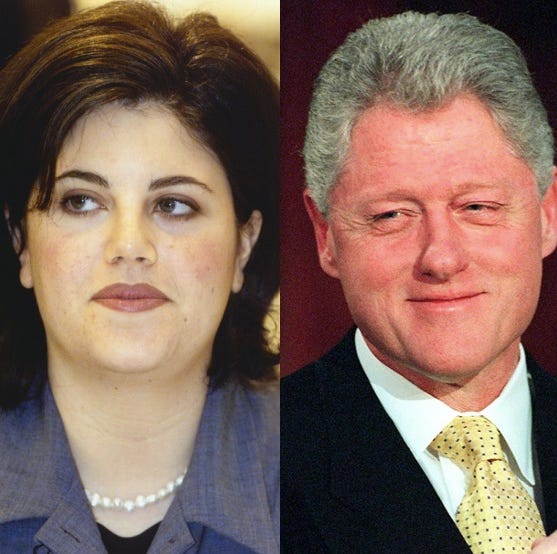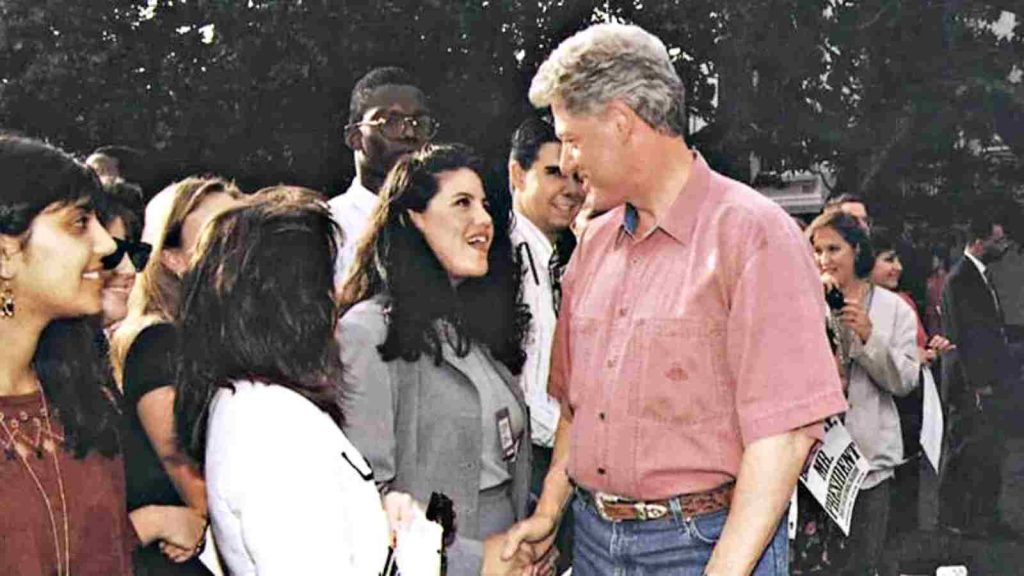The Monica Lewinsky Scandal: Unraveling the Untold Story of Bill Clinton
The 1990s were a time of significant political and cultural upheaval, and at the heart of it all, a scandal of unprecedented proportions unfolded: the Monica Lewinsky affair. This wasn’t just a story of infidelity; it was a complex web of power, politics, and public perception that continues to resonate today. This article dives deep into the events, the key players, and the lasting impact of the Lewinsky scandal, offering a comprehensive and unbiased look at the story of Bill Clinton and the woman who became a household name.
The Seeds of a Scandal: A White House Romance
The story begins in the White House, where a young intern named Monica Lewinsky found herself drawn into a relationship with the President of the United States, Bill Clinton. This was a situation fraught with power imbalances and potential for exploitation, setting the stage for the dramatic events to come.
The Players:
- Bill Clinton: The 42nd President of the United States, facing allegations of sexual misconduct.
- Monica Lewinsky: A 22-year-old White House intern, involved in the affair.
- Linda Tripp: A former White House employee and friend of Lewinsky, who secretly recorded their conversations.
- Kenneth Starr: The Independent Counsel appointed to investigate the Whitewater controversy, whose investigation expanded to include the Lewinsky affair.
The Timeline: The relationship is believed to have started in late 1995 and continued for a period, ending in early 1997.
The Telltale Tapes and the Investigation Begins
The relationship might have remained a secret, had it not been for the actions of Linda Tripp. Tripp, who had grown distrustful of Clinton and his administration, secretly recorded her conversations with Lewinsky. These tapes contained detailed accounts of the affair, eventually leading to the involvement of Kenneth Starr and the beginning of a formal investigation.
- The Role of Linda Tripp: Tripp’s motivations are complex, ranging from personal grievances to a desire to expose what she perceived as Clinton’s wrongdoing. Her actions, however, were crucial in bringing the scandal to light.
- The Starr Report: The Independent Counsel’s investigation culminated in the Starr Report, a detailed document outlining the evidence against Clinton, including Lewinsky’s testimony and the tapes. The report was highly graphic and detailed, and its release to the public caused a media frenzy.
Impeachment and the Aftermath: A Nation Divided
The revelations in the Starr Report led to impeachment proceedings against President Clinton. The House of Representatives voted to impeach him on charges of perjury and obstruction of justice. The subsequent Senate trial, however, resulted in Clinton’s acquittal.
- The Articles of Impeachment: Clinton was impeached on two articles:
- Perjury: Lying under oath about his relationship with Lewinsky.
- Obstruction of Justice: Attempting to conceal evidence and obstruct the investigation.
- The Senate Trial: Following the House’s impeachment vote, the Senate held a trial. Despite the evidence, Clinton was acquitted on both charges, allowing him to remain in office.
- Public Opinion: The scandal deeply divided the American public. Supporters of Clinton often dismissed the affair as a personal matter, while his critics saw it as a serious abuse of power and a betrayal of public trust.
Beyond the Headlines: The Lasting Impact
The Monica Lewinsky scandal had a profound and lasting impact on American politics, culture, and legal practices. It redefined the relationship between the media and political figures, and it continues to be a subject of debate and discussion.
- The Media’s Role: The scandal marked a turning point in media coverage of political scandals. The 24-hour news cycle amplified the story, often focusing on sensational details rather than substantive issues.
- The Definition of “Sex”: The legal definition of sexual relations was challenged and scrutinized during the investigation. Clinton’s legal team argued that oral sex did not constitute “sexual relations,” a point that became a central aspect of the defense.
- The Legacy of Monica Lewinsky: The scandal forever changed Lewinsky’s life. She became a target of public scrutiny and ridicule, and her reputation was severely damaged. In recent years, she has emerged as an anti-bullying activist, using her platform to advocate for online safety and mental health awareness.
- Political Polarization: The scandal further intensified political polarization in the United States, contributing to a climate of distrust and animosity between opposing parties.
FAQs About the Monica Lewinsky Scandal
Here are some frequently asked questions about the scandal:
- What was the main charge against Bill Clinton? The main charges were perjury (lying under oath) and obstruction of justice.
- What was the role of Kenneth Starr? He was the Independent Counsel appointed to investigate the Whitewater controversy, whose investigation expanded to include the Lewinsky affair.
- Was Bill Clinton removed from office? No, he was acquitted by the Senate and remained in office.
- What happened to Monica Lewinsky after the scandal? She faced intense public scrutiny and struggled to rebuild her life. In recent years, she has become an advocate against bullying.
- What was the impact on the American political landscape? The scandal intensified political polarization, changed media coverage of politicians, and raised questions about the definition of sexual relations.
Conclusion: A Chapter in American History
The Monica Lewinsky scandal remains a defining moment in American history. It’s a complex story that serves as a reminder of the power of secrets, the fragility of trust, and the enduring impact of political events on individuals and society as a whole. Understanding the context, the key players, and the lasting consequences of this scandal is crucial for comprehending the evolution of American politics and culture in the late 20th and early 21st centuries. The story of Bill Clinton and Monica Lewinsky is a cautionary tale of power, ambition, and the enduring consequences of choices made in the corridors of power.




